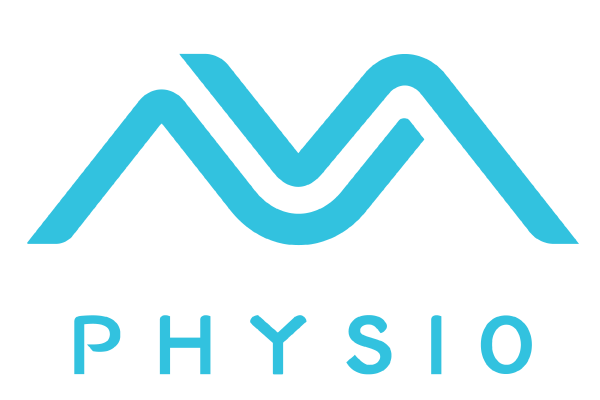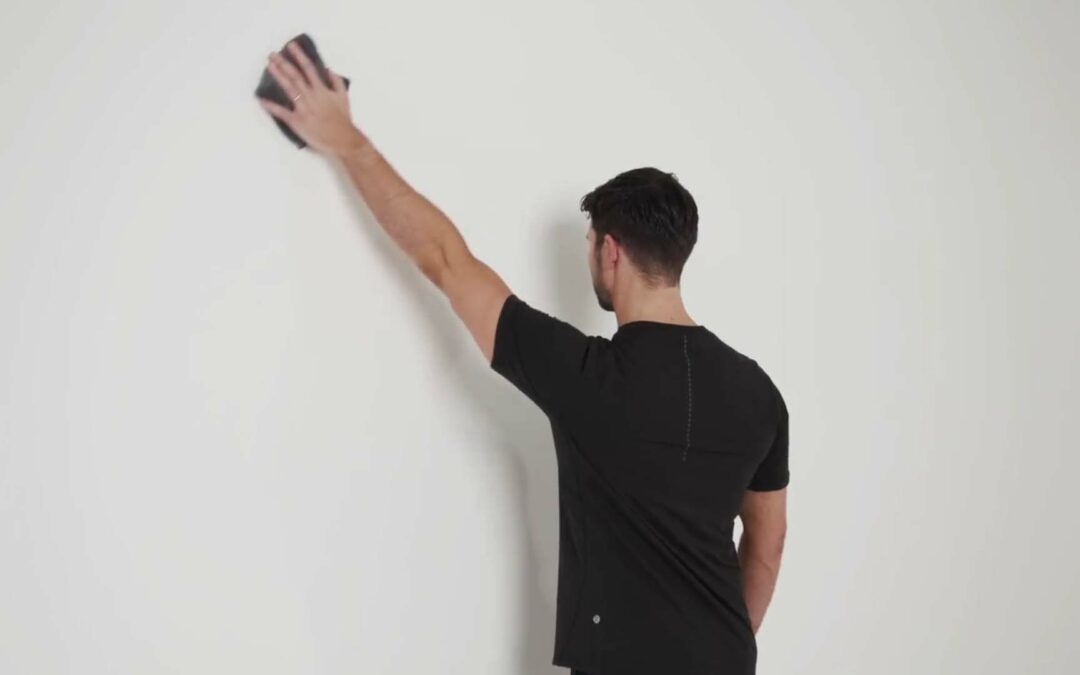What readers will learn by reading this article:
- The role of neurodynamic treatment in addressing nerve entrapment syndromes and shoulder-related conditions.
- The significance of shoulder abduction exercises in neurodynamic treatment and how they can improve neural mobility in the shoulder region.
- How to incorporate abduction sliders into a comprehensive shoulder physiotherapy routine and track progress while seeking professional guidance.
Shoulder pain and limited mobility can significantly impact daily activities and quality of life. Whether it’s due to an injury, overuse, or a medical condition, finding effective treatment options is essential for recovery. In the field of physiotherapy, one technique that has gained attention for its ability to relieve pain and restore function is neurodynamic treatment. Neurodynamic treatment incorporates various techniques, including abduction sliders, to achieve balance, restore mobility, and normalize the intraneural environment. In this article, we will delve into the world of neurodynamic treatment and explore the significance of abduction sliders in revolutionizing shoulder physiotherapy.
Understanding Neurodynamic Treatment
Neurodynamic treatment is a manipulative therapy that aims to relieve pain and restore function in the nervous system. It involves techniques such as neural mobilization, glides, and stretching. The objective is to achieve balance, restore mobility, and normalize the intraneural environment. Specific techniques are used to treat conditions like nerve entrapment syndromes, carpal tunnel syndrome, and lower back pain. Neurodynamic treatment focuses on addressing the underlying neural component before targeting shoulder mobility to optimize outcomes and ensure long-term relief.
Research published in the Physiotherapy Journal highlights the importance of identifying and addressing neural irritation in adhesive capsulitis, also known as frozen shoulder, for optimal outcomes. The study found that by addressing the neural component first, patients experienced improvements in pain, range of motion, and disability scores. This underscores the significance of incorporating neurodynamic treatment in shoulder rehabilitation programs for individuals with adhesive capsulitis and similar conditions.
The Significance of Shoulder Abduction in Neurodynamic Treatment
Shoulder abduction, the movement of the arm away from the body, plays a crucial role in neurodynamic treatment for shoulder-related conditions. Abduction exercises help mobilize the nerves and improve neural mobility in the shoulder region. By incorporating abduction sliders into physiotherapy routines, patients can target the specific muscles and nerves involved in shoulder abduction, promoting better recovery outcomes.
Abduction sliders are a valuable tool in neurodynamic treatment. They allow controlled movement of the shoulder joint while minimizing strain on the surrounding muscles and tissues. By using sliders, individuals can perform abduction exercises with smooth and controlled motions, facilitating nerve gliding and reducing the risk of aggravating existing shoulder pain.
Preparing for Abduction Sliders
Before embarking on abduction slider exercises, it is important to warm up the shoulder muscles and joints to prevent injury and optimize the effectiveness of the exercises. Start with gentle shoulder circles, arm swings, and pendulum exercises to increase blood flow and loosen up the shoulder area. This will help prepare the muscles for the upcoming abduction sliders.
Proper body positioning and alignment are crucial for optimal results during abduction slider exercises. Maintain an upright posture, engage the core muscles, and relax the shoulders. It is important to avoid excessive tension or slouching during the exercises to ensure proper muscle activation and avoid unnecessary strain on the shoulder joint.
To perform abduction slider exercises, you will need a pair of sliders, towels, or even paper plates. Place the sliders under your hands or fingertips while maintaining contact with the floor or wall. Additionally, resistance bands can be used to add resistance and challenge the muscles further as you progress in your rehabilitation journey.
Abduction Sliders: Techniques
Abduction slider exercises can be performed in various positions, depending on your comfort level and the stage of your rehabilitation. Here are some common abduction slider exercises:
Shoulder Abduction with Sliders on a Flat Surface: Start by sitting on a chair or the edge of a bed with your feet flat on the ground. Place the sliders under your hands, ensuring that your fingertips are in contact with the sliders. Gently slide your hands away from your body, allowing your arms to abduct. Focus on maintaining control and performing smooth movements. Slowly return to the starting position and repeat for the desired number of repetitions.
Shoulder Abduction with Sliders Against a Wall: Stand facing a wall with your feet shoulder-width apart. Place the sliders against the wall at shoulder height. Position your hands on the sliders, ensuring that your fingertips are in contact. Slowly slide your hands up the wall, allowing your arms to abduct. Keep your core engaged and maintain a stable posture throughout the exercise. Return to the starting position and repeat.
Shoulder Abduction with Sliders in a Standing or Seated Position: Stand or sit on a stable surface with your feet flat on the ground. Hold the sliders in your hands, ensuring that your fingertips are in contact. Lift your arms out to the sides, allowing your shoulders to abduct. Focus on maintaining control and avoiding any jerky or sudden movements. Slowly bring your arms back to the starting position and repeat.
When performing abduction slider exercises, it is important to listen to your body and adjust the range of motion and intensity based on your comfort level. If you experience any pain or discomfort, reduce the range of motion or seek guidance from a qualified physiotherapist.
Common Mistakes to Avoid
To ensure safe and effective shoulder rehabilitation, it is crucial to avoid common mistakes that can hinder progress or cause injury during abduction slider exercises. Here are some common errors to watch out for:
Overexertion and Excessive Force: Avoid applying excessive force or pushing yourself too hard during abduction slider exercises. The focus should be on controlled movements rather than brute strength. Applying excessive force can strain the shoulder joint and surrounding muscles, leading to discomfort or injury.
Poor Posture and Alignment: Maintaining proper posture and alignment is essential for maximizing the benefits of abduction slider exercises. Avoid slouching or rounding the shoulders, as this can compromise the effectiveness of the exercise and potentially lead to strain or injury. Keep your core engaged and maintain an upright posture throughout the exercises.
Neglecting Warm-Up and Cool-Down: Skipping the warm-up and cool-down phases can increase the risk of injury and may limit the effectiveness of the exercises. Always allocate time for gentle warm-up exercises before starting abduction slider exercises, and conclude your routine with appropriate stretches and cool-down exercises to promote muscle recovery and flexibility.
It is crucial to perform abduction slider exercises with proper technique and technique. By avoiding these common mistakes, you can ensure a safe and effective shoulder rehabilitation experience.
Incorporating Abduction Sliders into a Comprehensive Shoulder Physiotherapy Routine
Abduction sliders are not standalone exercises but rather a valuable addition to a comprehensive shoulder physiotherapy program. To optimize the benefits and promote overall shoulder health, it is important to combine abduction sliders with other shoulder exercises and treatments.
A comprehensive shoulder physiotherapy routine may include exercises targeting different muscle groups, such as rotator cuff exercises, scapular stabilization exercises, and range of motion exercises. These exercises help strengthen the shoulder muscles, improve stability, and enhance overall shoulder function. Additionally, other treatments such as manual therapy, heat or cold therapy, and electrical stimulation may be incorporated into the program to further support the healing process.
The frequency and duration of abduction slider exercises may vary depending on individual needs and the specific stage of rehabilitation. It is important to consult with a qualified physiotherapist to develop a personalized treatment plan tailored to your unique condition and goals. A physiotherapist can guide you in determining the appropriate frequency, duration, and progression of abduction slider exercises to ensure optimal outcomes and minimize the risk of overexertion or injury.
Case Study: Sarah’s Journey to Restoring Shoulder Mobility with Abduction Sliders
Sarah, a 35-year-old office worker, had been experiencing shoulder pain and limited mobility for several months. The discomfort made it challenging for her to carry out simple daily tasks and affected her overall quality of life. Frustrated and seeking a solution, she decided to consult with a physiotherapist specializing in shoulder rehabilitation.
Upon evaluation, the physiotherapist identified nerve entrapment as the underlying cause of Sarah’s shoulder pain and restricted mobility. The therapist recommended incorporating neurodynamic treatment techniques, specifically abduction sliders, into Sarah’s rehabilitation program.
Over the course of several weeks, Sarah diligently followed her physiotherapist’s guidance and incorporated abduction slider exercises into her daily routine. She started with simple shoulder abduction exercises using sliders on a flat surface, gradually progressing to more challenging variations against a wall and in a standing position.
As Sarah continued her exercises, she noticed a significant improvement in her shoulder mobility and a decrease in pain. The abduction sliders effectively mobilized the nerves in her shoulder region, allowing for a smoother gliding motion and improved neural mobility. Sarah also found that the warm-up exercises and proper body positioning recommended by her physiotherapist helped optimize the results of the abduction slider exercises.
With consistent practice and professional guidance, Sarah was able to regain full range of motion in her shoulder and return to her normal activities pain-free. She was impressed by the impact that abduction sliders had on her shoulder rehabilitation and continued to incorporate them into her comprehensive shoulder physiotherapy routine.
Sarah’s case demonstrates the effectiveness of abduction sliders in restoring shoulder mobility and alleviating pain caused by nerve entrapment. This real-life example highlights the importance of seeking professional guidance and following a personalized treatment plan when dealing with shoulder-related conditions. By incorporating abduction sliders into a comprehensive shoulder physiotherapy program, individuals like Sarah can achieve optimal results and regain their shoulder function.
Tracking Progress and Seeking Professional Guidance
It is crucial to track your progress throughout your shoulder rehabilitation journey. Keep a record of your pain levels, range of motion improvements, and overall shoulder function. This will help you monitor your progress and make any necessary adjustments to your treatment plan.
While abduction slider exercises can be beneficial for many individuals, it is important to recognize that each person’s condition is unique. Seeking professional guidance from a qualified physiotherapist is essential, especially if you have underlying conditions or complex shoulder issues. A physiotherapist can provide expert advice, perform a thorough assessment, and make personalized recommendations to optimize your shoulder rehabilitation.
Conclusion
Shoulder pain and limited mobility can be debilitating, affecting various aspects of daily life. Incorporating abduction sliders into your shoulder physiotherapy routine can revolutionize your rehabilitation process by targeting specifc muscles and nerves involved in shoulder abduction. Neurodynamic treatment, including abduction sliders, aims to relieve pain, restore function, and optimize neural mobility in the shoulder region.
By understanding the significance of neurodynamic treatment, preparing properly for abduction slider exercises, and avoiding common mistakes, individuals can unlock their shoulder mobility potential and improve their overall shoulder health. However, it is important to remember that each person’s condition is unique, and seeking guidance from a qualified physiotherapist is crucial for personalized care and treatment plans.
Take proactive steps towards improving your shoulder function, but always remember to prioritize safety and consult with a healthcare professional for expert guidance. With the right approach and guidance, you can unlock your shoulder mobility and regain the freedom to engage in your favorite activities once again.

